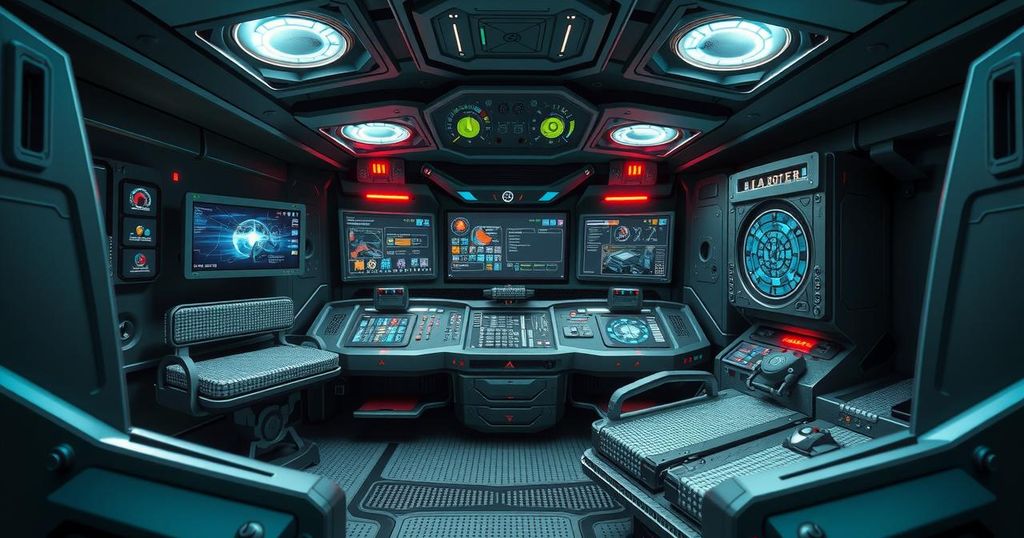AI
Tech
AEROSPACE, ARMY, ARMY BRADLEY, ARMY COMBAT CAPABILITIES DEVELOPMENT COMMAND, ARTIFICIAL INTELLIGENCE, BAE SYSTEMS, DEV, DEVCOM, GROUND VEHICLE SYSTEMS CENTER, GVSC, MARKET RESEARCH, MICH, NORTH AMERICA, TECHNOLOGY, U. S, U. S. ARMY, UNITED STATES, US, VEHICLE SYSTEMS CENTER, VENTURE CAPITAL, WARREN
James O'Connor
0 Comments
U.S. Army Plans Major AI Integration for Next-Gen Armored Combat Vehicles
The U.S. Army is seeking AI technology for next-gen armored combat vehicle crew stations. This initiative, part of the COAT program, aims to enhance control, situational awareness, and safety. Key features include voice-based AI, real-time health monitoring, and autonomous systems. The Army plans to implement these advancements swiftly, with initial rollouts expected within two years.
The U.S. Army is gearing up to significantly amp up its use of artificial intelligence (AI) in the new crew stations for its next-gen armored combat vehicles. This move, spearheaded by the Army Combat Capabilities Development Command (DEVCOM) based in Warren, Michigan, comes with a new request for information about products and technologies to support this ambitious project, dubbed the Advanced Crewstations for Ground Vehicles initiative.
In the spirit of innovation, the Army is looking beyond mere upgrades to existing technologies. Instead, they are diving headfirst into developing completely new combat vehicle systems that will allow for advanced functionalities, some set to roll out as soon as two years from now. This new direction is part of a broader initiative known as Army Crew Optimization and Augmentation Technologies (COAT).
Among key goals is optimizing the interface for head- and helmet-mounted displays. The Army envisions a multi-modal user interface, designed for ground crews to interact seamlessly with various systems. This will help manage what could be overwhelming amounts of information and data, all the while ensuring crew members aren’t bogged down by sensory overload.
AI’s pivotal role will extend to aiding in target recognition as well. The technology aims to swiftly identify aerial and ground threats through real-time data processed across thermal and color camera systems, all while the vehicle is in motion. Voice-based AI assistants are also on the list; think of them as a crucial support team that can relay threats, carry out commands, and lighten the crew’s load.
Moreover, crew readiness won’t be neglected. The proposal includes embedded training software that can offer on-the-fly learning for drivers and leaders alike. Coupled with this is an ambitious plan to implement 3D and external audio systems that would alert the crew to incoming threats—kind of like having an extra set of ears out in the wild.
On the health front, there’s a call for real-time monitoring of crew wellbeing with wearable sensors that gauge stress and fatigue. Novel approaches aim to visualize workflows clearly, translating complex tasks into manageable simulations. Plus, they are looking at autonomous simulations, merging technology with real-time control for enhanced efficiency.
The future also holds exciting options in robotics and human-machine collaboration, specifically focusing on how to better present unmanned ground vehicles to crews. The goal here? To pave a way for intuitive interactions and to improve operational effectiveness.
The Army is also keen on employing counter-unmanned aircraft systems, working to detect and neutralize small drones, whether they are commercial or military. In tandem with that, they plan on integrating docks for drones directly onto the vehicles. It’s not just about storage; they want these drones to be completely automated in terms of launch and recovery.
For companies looking to seize this opportunity, the Army requests that interested parties respond by June 8, 2025. They can direct their inquiries and proposals to Ben Berati via email. All the specifics can be found online at the official government site.
This new path for armored combat vehicles sets the stage for a leap into the realm of advanced technology, effectively reshaping military capabilities and enhancing operational readiness. In essence, the Army’s forward-thinking approach might just revolutionize ground warfare as we know it.
To sum it up, the U.S. Army is moving forward into an exciting era of armored combat vehicles driven by entirely new designs and innovative technologies. With a strong emphasis on AI integration at crew stations, they aim to improve situational awareness, enhance crew health monitoring, and streamline operations—all while working to stay several steps ahead of evolving battlefield threats. Companies eager to contribute to this initiative are encouraged to engage before the June deadline, signaling a significant moment not just for defense, but for military technology as a whole.
Original Source: www.militaryaerospace.com




Post Comment